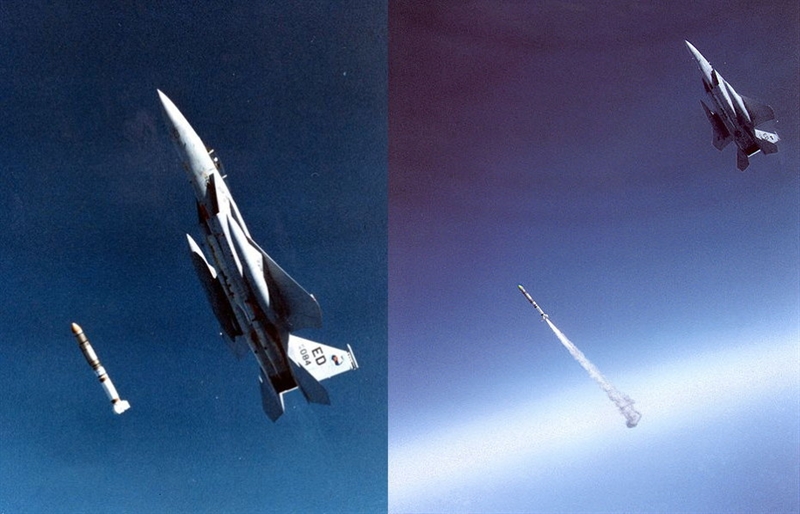In September 1985, an F-15 Eagle managed to destroy a machine orbiting Earth. But it wasn’t the Death Star mobile space station
Designed to achieve and preserve air superiority, the F-15 Eagle is an all-weather fighter. The F-15A is capable of acceleration during a vertical climb and is the first US fighter aircraft with engine thrust higher than its basic weight. Its great power, lightweight, and large wing area combine to make the Eagle a very agile fighter. For operational use, the USAF ordered over 350 A models.
In September 1985, an F-15A was even able to destroy a machine orbiting Earth.
But no, it wasn’t the Death Star mobile space station (the funny, photoshopped main image in this article was posted by the 412th Test Wing on Edwards Air Force Base’s Facebook page to celebrate the Star Wars Day and features the only F-15A ASAT testbed firing a Vought ASM-135A Anti-Satellite Missile (ASAT) at Death Star).
However, it wasn’t the Death Star mobile space station (the hilariously photoshopped image in this article, which shows the only F-15A ASAT testbed firing a Vought ASM-135A Anti-Satellite Missile (ASAT) at Death Star, was shared by the 412th Test Wing on the Edwards Air Force Base Facebook page in honor of Star Wars Day).
The ASM-135A carried by the Eagle was the only US air-launched missile to destroy a satellite, even though the F-15 never attacked a galactic superweapon. The original pictures of the F-15 firing an ASAT (seen below) were taken on September 13, 1985.

The Department of Defense has long sought to build an anti-satellite weapon system, as stated by Steve Markman & Bill Holder in their book One-of-a-Kind Research Aircraft. Since the 1960s, a number of ambitious and unsuccessful efforts have been made to achieve this goal. The majority of the endeavors were exceedingly intricate; nonetheless, a program employing a fighter-launched missile in the 1980s demonstrated that it was feasible.
The ASAT program actually began earlier as an outgrowth of the Prototype Miniature Air Launched Segment (PMALS) anti-satellite program. As the program matured, it was changed from PMALS to the more descriptive ASAT nomenclature.
Under the program, an F-15A was modified to enable it to launch and carry a 2,700-pound, two-stage missile. The missile was built in two stages. The first stage was an AGM-69 Short Range Attack Missile (SRAM), and the second stage was an Altair III Thiokol rocket motor with 6,000 pounds of thrust. The system also includes small rocket motors and a seeker system to help keep the missile on course.
A single live-fire test of the system was accomplished on September 13, 1985, when the F-15 was flown at a nearly vertical path to an altitude of 80,000 feet and then launched the missile. The specific F-15 employed for this task was one of many that were stationed at Edwards Air Force Base to support a range of test missions. The objective of the ASAT was to destroy the US Solwind P-78-1 Gamma Ray Spectrometer satellite. Despite the success of the launch, the test was never repeated, and the unique ASAT system, developed to counter suspected Soviet satellites, was never continued.
The program was divided into two phases: the modifications to the launching F-15A testbed and the development of the weapon system itself.
Modifications to the aircraft, which were known as Group A, included the installation of a modified central computer, expanded environmental control system (ECS) ducting, reinforced ammunition bay cover, and ammunition conveyer restraint.
The Group B missile-associated components included a stage ASAT missile, a dedicated centerline pylon, a modified ammo door, and a carrier aircraft equipment (C&E) pallet.
The launch technique used was the so-called “Zoom” launch maneuver, with the launching aircraft providing a significant velocity boost to the missile before its launch. The fact that the missile was launched at an extremely high altitude also greatly reduced the slowing aerodynamic drag forces the missile would have experienced at lower altitudes.
One-of-a-Kind Research Aircraft is published by Schiffer Publishing and is available to order here.
Photo by U.S. Air Force and Edwards Air Force Base Facebook page

